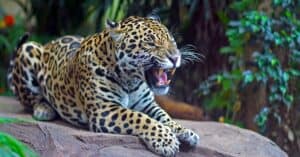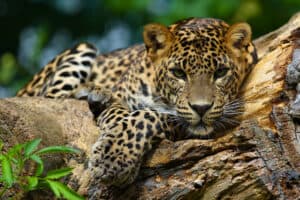Deep within the lush labyrinth of the Amazon rainforest, adorable furry felines roam throughout their dense jungle domain. These charismatic creatures may look cute and cuddly, but nature has molded these big babies into miniature assassins. With their fierce spirit and undeniable beauty, baby jaguars (Panthera onca) are pint-size warriors who demonstrate strength, resilience, and natural beauty. Let’s explore this collection of cute pictures and amazing facts about baby jaguar cubs!
1. Baby Jaguars Grow Up to Be the Largest Cats in the Americas
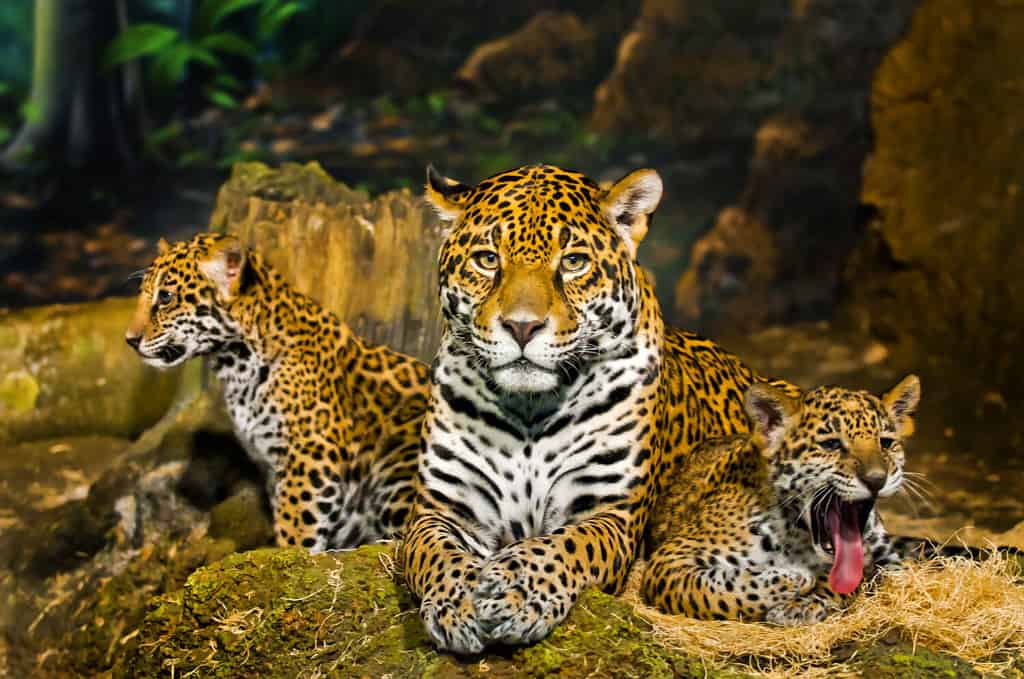
Female jaguars typically give birth to one to two cubs at a time.
©Kris Wiktor/Shutterstock.com
When they are first born, baby jaguar cubs are tiny and weigh just 2 pounds — that’s about the average size of a pineapple! These tiny, big cats come into the world with their eyes sealed shut but open them just a few weeks after birth. It takes two to four years for a baby jaguar to grow into an adult, but by the time they are fully grown, baby jaguars are enormous. In fact, adult jaguars are the largest cats in the Americas and the third largest on Earth! Only tigers and lions are larger than jaguars. Adult jaguars grow to be 22 to 32 inches tall at the shoulders and measure around 3.5 feet to 6 feet long. They typically weigh up to 215 pounds, but some males have been recorded to be over 300 pounds!
2. Jaguar Cubs Have Excellent Camouflage
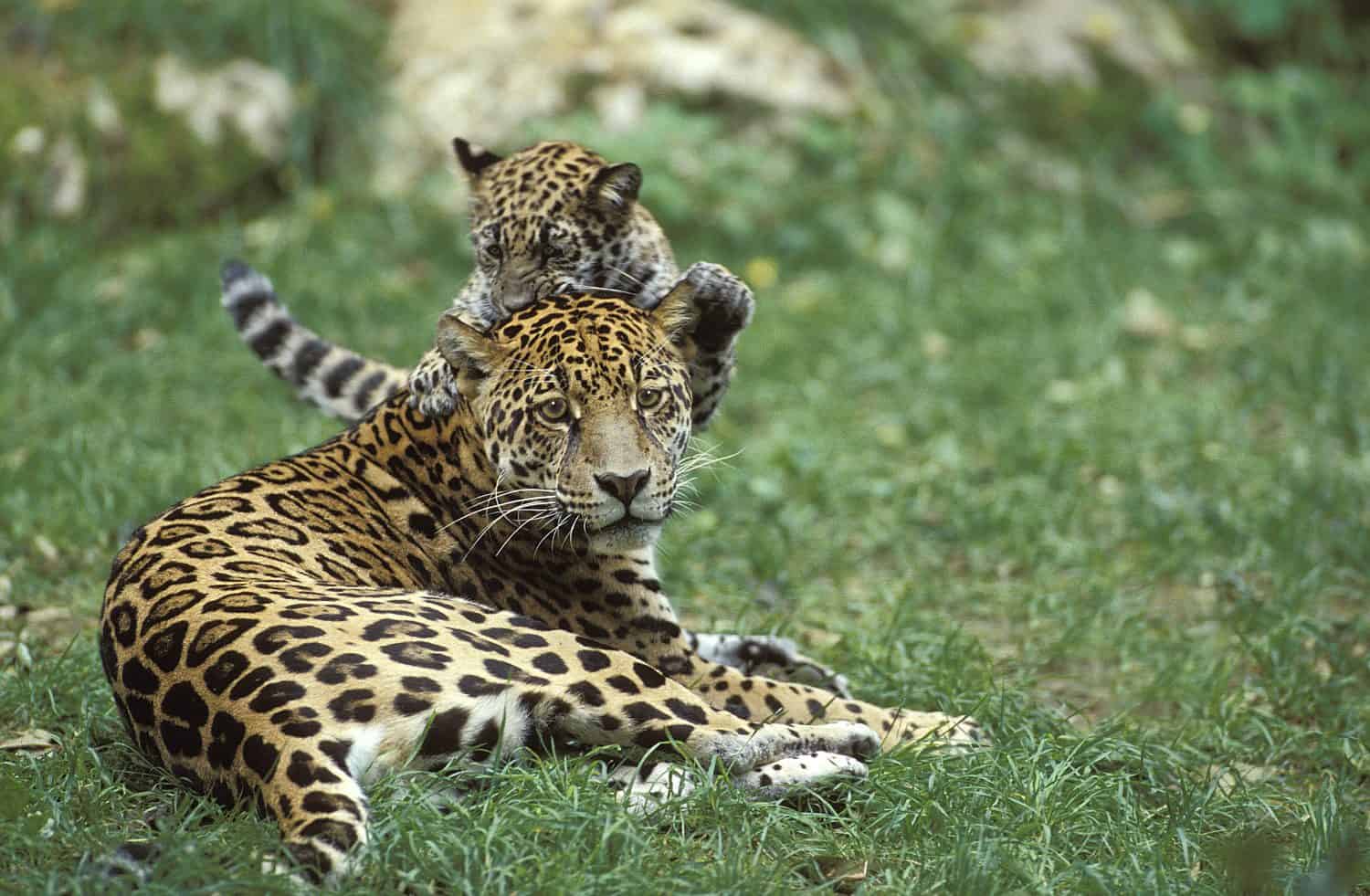
Play is an important part of a baby jaguar cub’s development.
©slowmotiongli/Shutterstock.com
Jaguars live in dense forests of Central and South America, preferring habitats with dense vegetation. They have unique colors and patterns that allow them to seamlessly blend into patchy and dappled shadows, adding to their masterful stealth. Baby jaguar cubs are born with tan, pale yellow, or reddish-yellow coats with distinct black spotted patterns. Each jaguar cub has its own uniquely individual pattern of spots, much like a human fingerprint. The spots on their heads and necks tend to be more solid, while their sides boast beautiful rosette patterns. Their mesmerizing spots vary in shape and size and may appear similar to a leopard. However, jaguars possess rosettes with spots, which distinguishes them from leopards. In addition, jaguars tend to be slightly larger than leopards.
3. Some Baby Jaguars Are Completely Black

Sometimes black jaguars are called “black panthers”.
©Eric Isselee/Shutterstock.com
While most sport yellow or golden fur, on rare occasions, baby jaguars are born with completely black coats! These adorably dark cubs are melanistic jaguars with a rare genetic alteration that causes their fur to be completely black. However, they are not actually solid black, as they still sport iconic “rosette” spots — they’re just harder to see scattered throughout their black fur coats. Although these beautifully unique cats are not very common, their unusual appearance does come with an advantage. Black jaguars tend to be more active during the daytime because their dark coloring provides excellent camouflage in areas with dense vegetation and bright sunlight.
4. Jaguar Cubs Love the Water
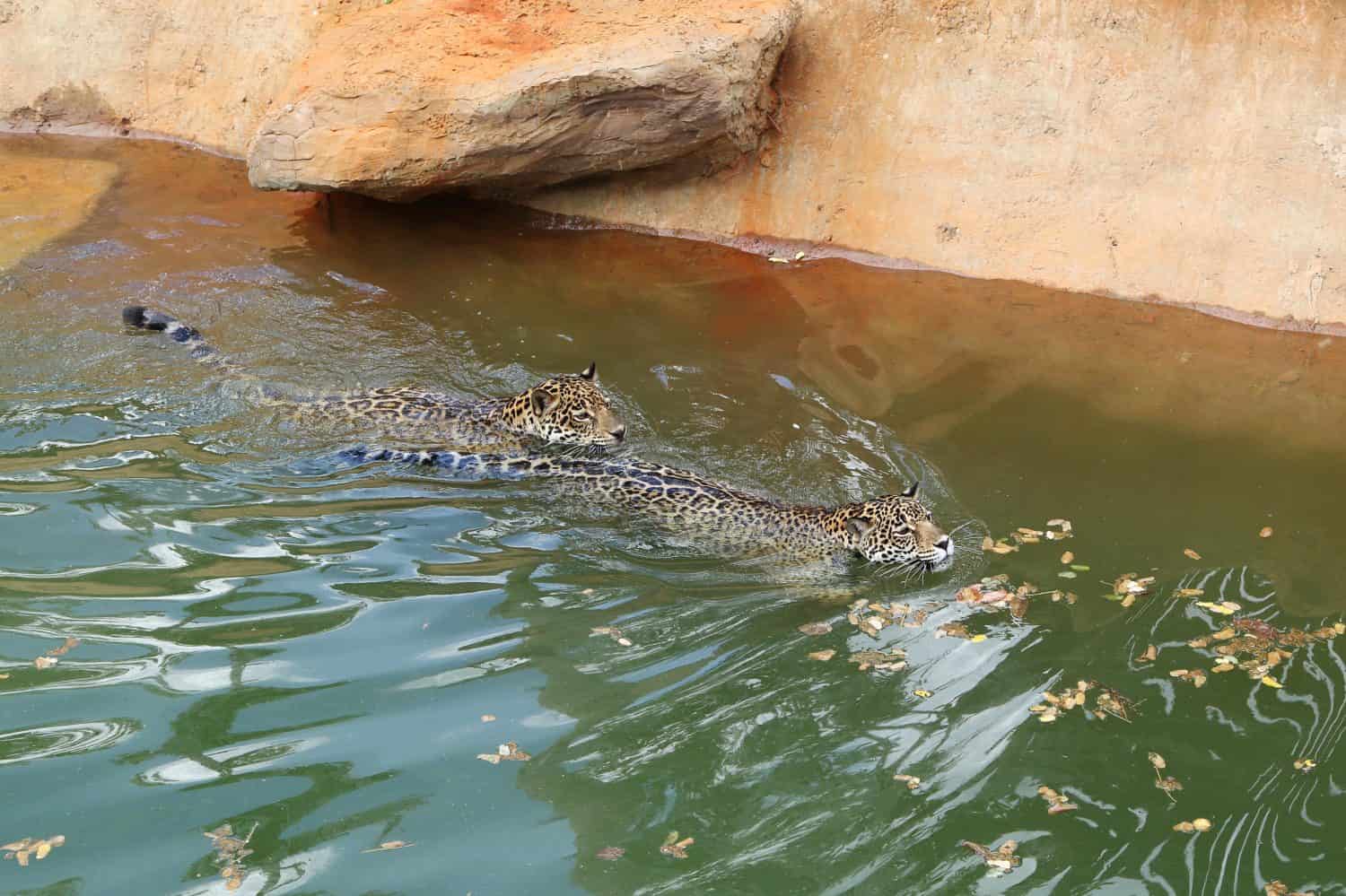
Mothers teach baby jaguar cubs how to climb trees and hunt both on land and in water.
©BaLL LunLa/Shutterstock.com
Another difference between leopards and jaguars is that while leopards hate water, baby jaguar cubs love it! Jaguars live in dense tropical forests close to lakes, rivers, and wetlands, and enjoy frequent dips in the water. They are excellent swimmers and can even hunt underwater, eating animals like turtles, fish, and even caimans on occasion. In addition, jaguars may even use their tails as lures to attract fish! In addition to their aquatic prey, baby jaguars learn to hunt animals like capybaras, peccaries, deer, birds, and monkeys.
5. Baby Jaguars Leave Their Mothers at the Age of Two
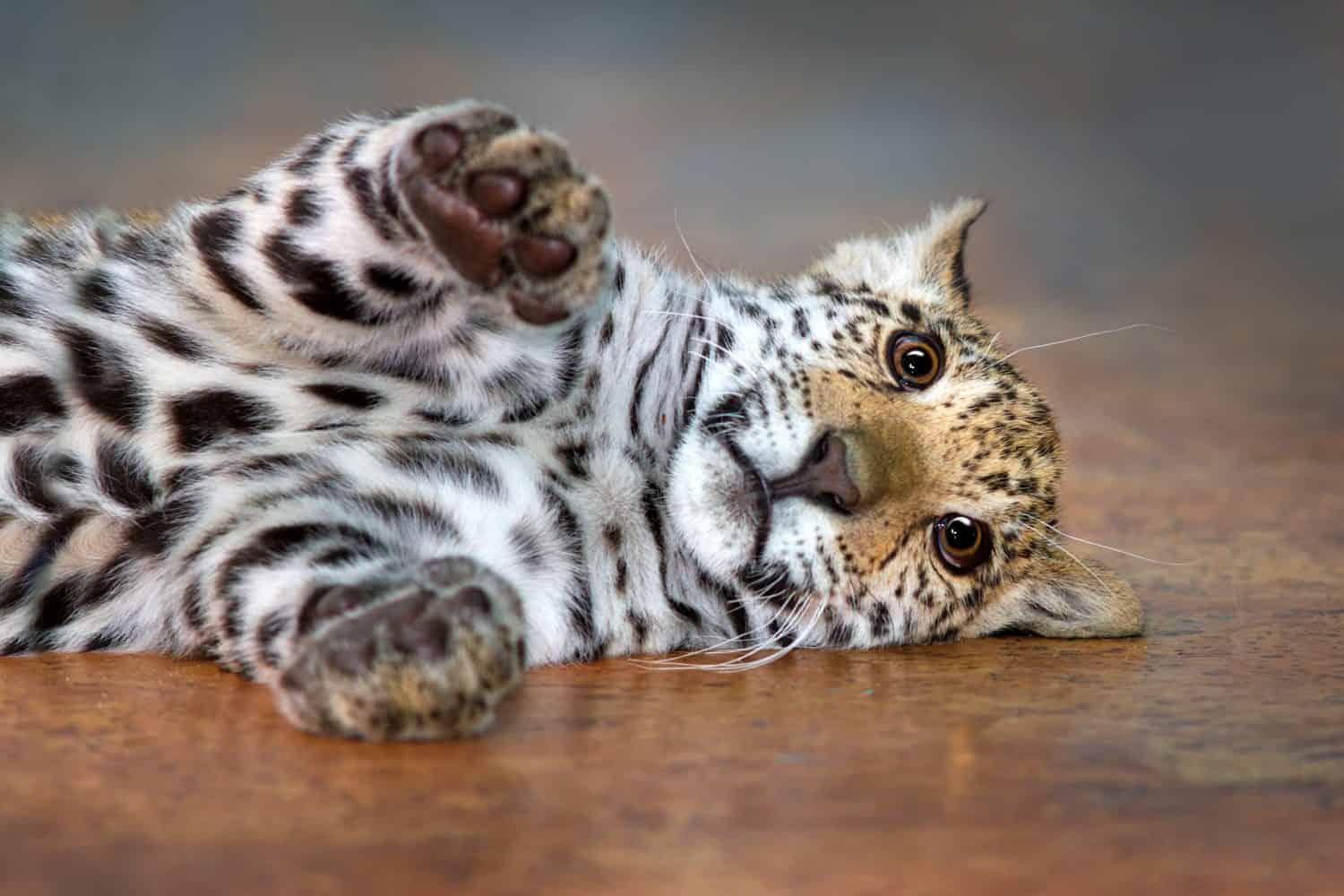
When jaguar cubs are around two years old, they leave their mothers and begin their own solitary lives.
©Kwadrat/Shutterstock.com
Female jaguars are pregnant for around 100 days and give birth to one to two cubs at a time. When baby jaguar cubs are born, they are relatively helpless and can’t even see! A few weeks after birth, they begin to open their eyes, and when they are around six months old their mothers teach them to hunt. Male jaguars do not care for their young at all. In fact, some fathers even kill their own cubs. Because of this, female jaguars may hide their cubs and keep them far from the males to keep them safe. When the baby jaguar cubs are around two years old, they leave their mothers and begin their own solitary lives.
6. Jaguar Cubs Are Threatened with Extinction

Female jaguars may hide their cubs and keep them far from the males to keep them safe.
©mjf795/ via Getty Images
Unfortunately, baby jaguar cubs are listed as Near Threatened by the International Union for Conservation of Nature (IUCN). This means that their numbers are decreasing and that they are in danger of extinction. Sadly, the biggest threat to their populations comes from humans. As human activities continue to encroach upon their natural habitat, jaguars continue to lose their homes and their habitats become fragmented.
In addition, illegal hunting poses another grave danger to the jaguar population. Some people kill jaguars in retaliation for livestock depredation, while others hunt them for the illegal trade of their pelts and body parts. Fortunately, hunting jaguars is prohibited in many countries, although some poachers continue to do so. That is why it is so important to educate and help change human attitudes to make conservation areas more effective and help preserve this beautiful species.
7. Baby Jaguars Have Been Highly Revered Symbols for Thousands of Years
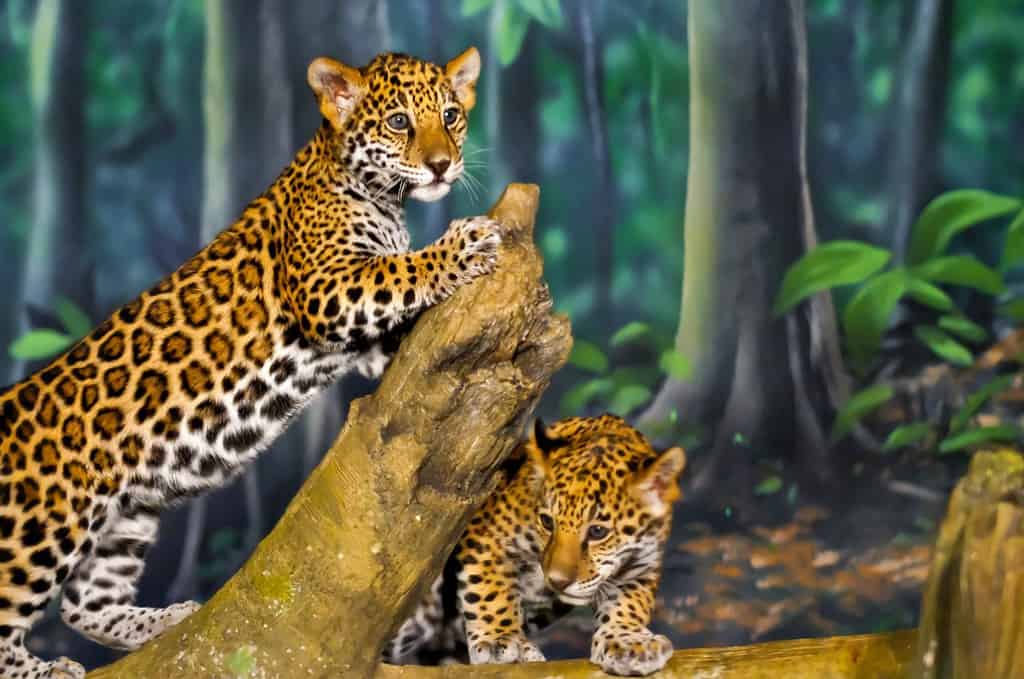
In the past, jaguars roamed from central Argentina up to the southwestern United States.
©Kris Wiktor/Shutterstock.com
While colonialists and Spanish conquistadors were frightened by jaguars when they arrived in the Americas, the continents’ native cultures have lived peacefully alongside them for thousands of years. In the Andes, for example, the early Chavin people embraced the jaguar cult back in 900 BC, while the Moche Peru recognized these powerful big cats as symbols of power in their ceramic artworks. The Muisca civilization also considered the jaguar to be a sacred animal, and the Ancient Maya believed that jaguars acted as intermediaries between the living and the dead as well as protectors of the royal household. Some Maya in Guatemala may have even kept jaguars as pets! Even today, jaguars serve as national symbols in Guaya and on the flags and crests of many nations.
Charles Darwin reported that the indigenous peoples were not afraid of jaguars. As long as there were lots of capybaras, there was no need to fear the jaguar. In fact, there are very few records of jaguars ever killing humans. Human attacks only seem to occur when a jaguar is wounded, trapped, or cornered. Some experts assert that the jaguar is the least likely of the Pantherinae scientific subfamily (jaguars, leopards, lions, tigers, etc.) to attack humans.
The photo featured at the top of this post is © Kwadrat/Shutterstock.com
Thank you for reading! Have some feedback for us? Contact the AZ Animals editorial team.



